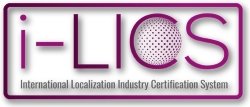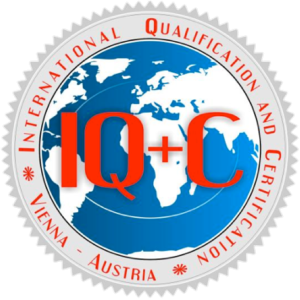ISO 17100 Terms and Definitions
IntroductionThis International Standard specifies requirements for all aspects of the translation process directly affecting the quality and delivery of translation services. It includes provisions for translation service providers (TSPs) concerning the management of core processes, minimum qualification requirements, the availability and management of resources, and other actions necessary for the delivery of a quality translation service.
This International Standard is intended for implementation by TSPs of any size. Conformity requires all the International Standard’s provisions to be met, but the methods of implementation may differ depending on the size and complexity of the organization and, in some cases, on the volume and complexity of the translation service being requested of the TSP.
The following auxiliary verbs used in this International Standard have the conventional usage assigned to them by ISO directives:
– shall – used to indicate requirements strictly to be followed in order to conform to the document and from which no deviation is permitted;
– should – used to indicate that, among several possibilities, one is recommended as particularly suitable, without mentioning or excluding others, or that a certain course of action is preferred but not necessarily required;
– may – be used to indicate a course of action permissible within the limits of the document;
– can – be used for statements of possibility and capability, whether material, physical, or causal. In this International Standard, the following convention in use has been adopted to provide clarity where there might otherwise be confusion of concept:
– references to “requirements” relate to provisions of this International Standard, other standards, or legal regulation;
– references to “specifications” relate to provisions involving the translation service or project originating from the client, TSP, or other sources. 1 Scope
This International Standard provides requirements for the core processes, resources, and other aspects necessary for the delivery of a quality translation service that meets applicable specifications.
Application of this International Standard also provides the means by which a translation service provider (TSP) can demonstrate the conformity of specified translation services to this International Standard and the capability of its processes and resources to deliver a translation service that will meet the clients and other applicable specifications.
Applicable specifications can include the client, the TSP itself, and any relevant industry codes, best-practice guides, or legislation.
The use of raw output from machine translation plus post-editing is outside the scope of this International Standard.
This International Standard does not apply to interpreting services.
2 Terms and definitionsFor the purposes of this document, the following terms and definitions apply.
2.1 Concepts related to translation and translation services
2.1.1translate
render source language content (2.3.2) into target language content (2.3.3) in written form 2.1.2
translation
set of processes (2.1.4) to render source language content (2.3.2) into target language content (2.3.3) in written form
Note 1 to entry: A translation may refer to formats other than text-based formats (e.g. an audio file, image, etc.). 2.1.3
translation workflow
processes (2.1.4), or parts thereof, involved in achieving target language content (2.3.3) 2.1.4
process
set of interrelated and interacting activities performed in order to achieve a stated objective 2.1.5
product
the output of the process (2.1.4)
EXAMPLE 1:
A translated (2.1.1) version of a book purchased from a retail shop or on the web.
EXAMPLE 2:
Intellectual property in the content of a translated (2.1.1) book can be the subject of agreement between the author and the translator (2.4.4).
EXAMPLE 3:
A TSP (2.4.2) translating a book for a publisher is providing a service (2.1.6). Computer software can be purchased to support a range of translation (2.1.2)processes (2.1.4).
Note 1 to entry: Many product categories comprise elements that form a generic product. Its dominant element determines whether the product is designated processed material, intellectual property, software, or services (2.1.6). 2.1.6
translation service
intangible product (2.1.5) that is the result of interaction between the client (2.4.3) and TSP (2.4.2) 2.1.7
interpret
render spoken or signed information from one language to another language in oral or signed form 2.2 Concepts related to translation workflow and technology
2.2.1
computer-aided translation
CAT
part of translation workflow (2.1.3) in which a variety of software applications are used to support the task of human translation(2.1.2)
Note 1 to entry: These computer programs are usually referred to as translation (2.1.2) tools, computer-aided translation tools, or, sometimes, translation environment tools (TEnTs). 2.2.2
machine translation
MT
automated translation (2.1.2) of text or speech from one natural language (2.3.8) to another using a computer system 2.2.3
machine translation output
the outcome of machine translation (2.2.2) 2.2.4
post-edit
edit and correct machine translation output (2.2.3)
Note 1 to entry: This definition means that the post-editor will edit output automatically generated by a machine translation engine. It does not refer to a situation where a translator sees and uses a suggestion from a machine translation engine within a CAT (computer-aided translation) tool. 2.2.5
check
examination of target language content (2.3.3) carried out by the translator (2.4.4) 2.2.6
revision
bilingual examination of target language content (2.3.3) against source language content (2.3.2) for its suitability for the agreed purpose
Note 1 to entry: The term bilingual editing is sometimes used as a synonym for revision. 2.2.7
review
monolingual examination of target language content (2.3.3) for its suitability for the agreed purpose
Note 1 to entry: The term monolingual editing is sometimes used as a synonym for review. 2.2.8
proofread
examine the revised target language content (2.3.3) and apply corrections (2.5.4) before printing 2.2.9
project management
coordinating, managing, and monitoring a project throughout its complete lifecycle 2.2.10
style guide
set of editing and formatting instructions
2.3 Concepts related to language and content
2.3.1content
anything representing meaningful information or knowledge 2.3.2
source language content
language content (2.3.1) to be translated (2.1.1) 2.3.3
target language content
language content (2.3.1)translated (2.1.1) from source language content (2.3.2) 2.3.4
text
content (2.3.1) in written form 2.3.5
source language
language of the source language content (2.3.2) 2.3.6
target language
language into which source language content (2.3.2) is translated (2.1.1) 2.3.7
language register
variety of language used for a particular purpose or in a particular social or industrial domain (2.3.10) 2.3.8
natural language
written, signed, or spoken human language
Note 1 to entry: For example, languages that are not natural include programming languages such as C++. 2.3.9
text-type convention
a subset of specifications for the target language content (2.3.3) related to the content (2.3.1) type and domain (2.3.10)
Note 1 to entry: For example, with acts of law, there are formal conventions that are always used by legislators. 2.3.10
domain
subject field, the sphere of knowledge or activity has its own specialized culture, social context, and linguistic characteristics 2.3.11
locale
set of characteristics, information, or conventions specific to the linguistic, cultural, technical, and geographical conventions of a target audience
2.4 Concepts related to the people involved in translation services
2.4.1language service provider
LSP
person or organization who provides language-related services 2.4.2
translation service provider
TSP
language service provider (2.4.1) that provides professional translation services (2.1.6)
EXAMPLE:
Translation companies, individual translators, or in-house translation departments.
Note 1 to entry: Language service provider (LSP) (2.4.1) is a more general term involving other language-related and value-added services but for the purposes of this International Standard, LSPs (2.4.1) are considered to be TSPs when they are providing translation services. 2.4.3
client
customer
<translation services> person or organization that commissions a translation service (2.1.6) from a TSP (2.4.2) by formal agreement
Note 1 to entry: The client can be the person or organization requesting or purchasing the translation service (2.1.6) and can be external or internal to the TSP’s (2.4.2) organization 2.4.4
translator
a person who translates (2.1.1) 2.4.5
reviser
person who revises (2.2.6)target language content (2.3.3) against source language content (2.3.2) 2.4.6
reviewer
person who reviews (2.2.7)target language content (2.3.3) 2.4.7
proofreader
a person who proofreads (2.2.8)target language content (2.3.3) 2.4.8
project manager
PM
a person who manages specified aspects of a translation project and is responsible for the process 2.4.9
competence
ability to apply knowledge, experience, and skills to achieve intended results
2.5 Concepts related to control of the translation service process
2.5.1verification
confirmation by the project manager (2.4.8) that specifications have been fulfilled 2.5.2
document
information and its supporting medium
Note 1 to entry: The medium can be paper, magnetic, electronic or optical computer disc, photograph or master sample, or a combination thereof.
Note 2 to entry: A set of documents, e.g. specifications and records (2.5.3), is frequently referred to as “documentation”.
[SOURCE: ISO 9000:2005, 3.7.2] 2.5.3
record
document (2.5.2) or report stating results achieved or providing evidence of activities performed 2.5.4
correction
<translation service> action taken to correct an error in target language content (2.3.3) or translation process (2.1.4) or nonconformity to a requirement of this International Standard when conformity has been claimed
Note 1 to entry: Corrections generally arise as a result of errors found when the translator is checking (2.2.5) the target language content (2.3.3) when reported by a reviser (2.4.5) or reviewer (2.4.6) or proofreader (2.4.7) or client (2.4.3), or during an internal or external audit of the implementation of this International Standard. 2.5.5
corrective action
action is taken to eliminate the cause of nonconformity or errors in the translation process (2.1.4) or target language content (2.3.3)
Note 1 to entry: Corrective action involves an investigation to identify what went wrong and what action can be taken to ensure that it does not happen in the same way again.
Source: https://www.iso.org/obp/ui/#iso:std:iso:17100:ed-1:v1:en
Refund conditions:
Please note that directly after successful payment, we reserve your seat and forward the fees to the certification body. For both reasons, those fees are logistically non-refundable. In case of any personal circumstances, you can ask for replacing for a new upcoming session. Please contact support@translationstandards.net. Thank you for your understanding.

